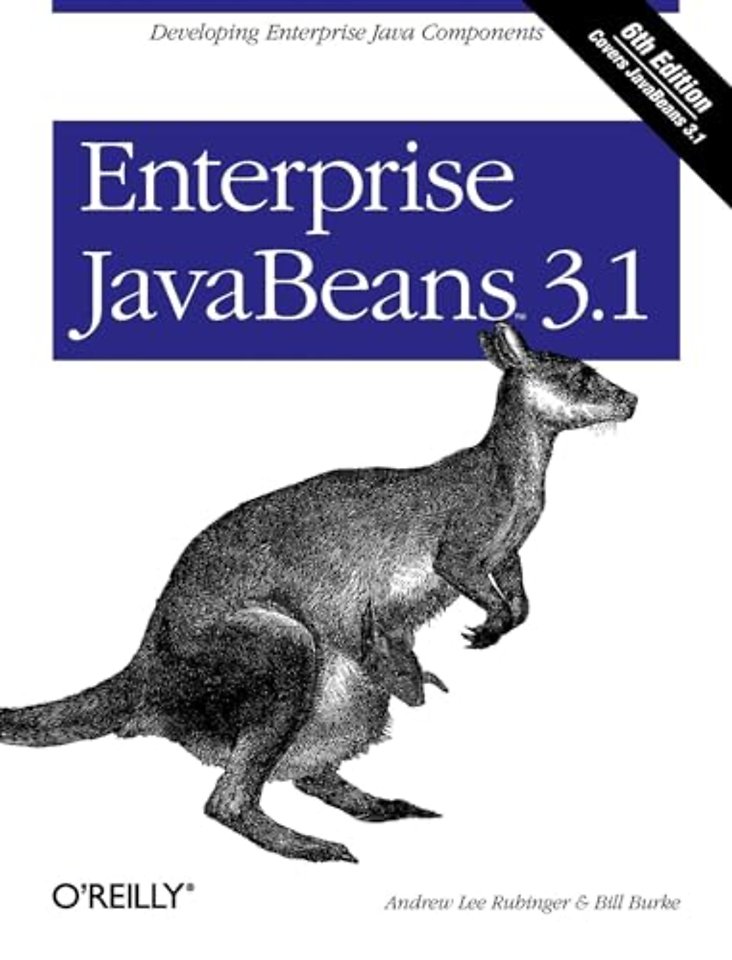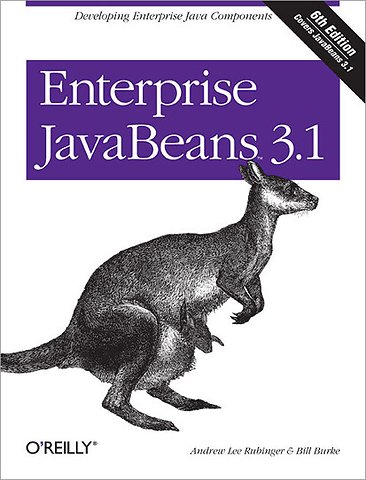


As Senior Software Engineer at JBoss, a Division of Red Hat, Andrew Lee Rubinger is primarily responsible for development of the company's EJB 3.
Meer over de auteursEnterprise JavaBeans 3.1, 6th Edition
Developing Enterprise Java Components
Samenvatting
Learn how to code, package, deploy, and test functional Enterprise JavaBeans with the latest edition of this bestselling guide. Written by the developers of JBoss EJB 3.1, this book not only brings you up to speed on each component type and container service in this implementation, it also provides a workbook with several hands-on examples to help you gain immediate experience with these components.
With version 3.1, EJB's server-side component model for building distributed business applications is simpler than ever. But it's still a complex technology that requires study and lots of practice to master. 'Enterprise JavaBeans 3.1' is the most complete reference on this specification. You'll find a straightforward, no-nonsense explanation of the underlying technology, including Java classes and interfaces, the component model, and the runtime behavior of EJB.
- Develop your first EJBs with a hands-on walkthrough of EJB 3.1 concepts
- Learn how to encapsulate business logic with Session Beans and Message-Driven Beans
- Discover how to handle persistence through Entity Beans, the EntityManager, and the Java Persistence API
- Understand EJB's container services such as dependency injection, concurrency, and interceptors
- Integrate EJB with other technologies in the Java Enterprise Edition platform
- Use examples with either the JBossAS, OpenEJB, or GlassFish v3 EJB Containers
Specificaties
Over Bill Burke
Inhoudsopgave
Part 1: Why Enterprise JavaBeans?
1. Introduction
-The Problem Domain
2. Component Types
-Server-Side Component Types
-Entity Beans
-The Model Isn't Everything
3. Container Services
-Dependency Injection (DI)
-Concurrency
-Instance Pooling/Caching
-Transactions
-Security
-Timers
-Naming and Object Stores
-Interoperability
-Lifecycle Callbacks
-Interceptors
-Platform Integration
-Bringing It Together
4. Developing Your First EJBs
-Step 1: Preparation
-Step 2: Coding the EJB
-Summary
Part 2: Server-Side Component Models
5. The Stateless Session Bean
-The XML Deployment Descriptor
-SessionContext
-The Lifecycle of a Stateless Session Bean
-Example: The EncryptionEJB
-Asynchronous Methods
6. The Stateful Session Bean
-The Lifecycle of a Stateful Session Bean
-Example: The FileTransferEJB
7. The Singleton Session Bean
-Concurrency
-Lifecycle
-Example: The RSSCacheEJB
8. Message-Driven Beans
-JMS and Message-Driven Beans
-JMS-Based Message-Driven Beans
-The Lifecycle of a Message-Driven Bean
-Connector-Based Message-Driven Beans
-Message Linking
Part 3: EJB and Persistence
9. Persistence: EntityManager
-Entities Are POJOs
-Managed Versus Unmanaged Entities
-Packaging a Persistence Unit
-Obtaining an EntityManager
-Interacting with an EntityManager
-Example: A Persistent Employee Registry
10. Mapping Persistent Objects
-The Programming Model
-Basic Relational Mapping
-Primary Keys
-Property Mappings
-@Embedded Objects
11. Entity Relationships
-The Seven Relationship Types
-Mapping Collection-Based Relationships
-Detached Entities and FetchType
-Cascading
12. Entity Inheritance
-Single Table per Class Hierarchy
-Table per Concrete Class
-Table per Subclass
-Mixing Strategies
-Nonentity Base Classes
13. Queries, the Criteria API, and JPA QL
-Query API
-JPA QL
-Native Queries
-Named Queries
14. Entity Callbacks and Listeners
-Callback Events
-Callbacks on Entity Classes
-Entity Listeners
Part 4: Container Services
15. Security
-Authentication and Identity
-Authorization
-Example: A Secured School
16. JNDI, the ENC, and Injection
-Global JNDI
-The JNDI ENC
-Reference and Injection Types
17. Transactions
-ACID Transactions
-Declarative Transaction Management
-Isolation and Database Locking
-Nontransactional EJBs
-Explicit Transaction Management
-Exceptions and Transactions
-Transactional Stateful Session Beans
-Conversational Persistence Contexts
18. Interceptors
-Intercepting Methods
-Interceptors and Injection
-Intercepting Lifecycle Events
-Exception Handling
-Interceptor Lifecycle
-Bean Class @AroundInvoke Methods
19. Timer Service
-Example: A Batch Credit Card Processing System
-Transactions
-Stateless Session Bean Timers
-Message-Driven Bean Timers
20. EJB 3.1: Web Services Standards
-Web Services Overview
-XML Schema and XML Namespaces
-SOAP 1.1
-WSDL 1.1
-UDDI 2.0
-From Standards to Implementation
21. EJB 3.1 and Web Services
-Accessing Web Services with JAX-RPC
-Defining a Web Service with JAX-RPC
-Using JAX-WS
-Other Annotations and APIs
-JAXB
-Conclusion
Part 5: Examples
Appendix A: FirstEJB Example
Appendix B: Stateless Session EJB: Encryption Example
Appendix C: Stateful Session EJB: FTP Client Example
Appendix D: Singleton Session EJB: RSS Cache Example
Appendix E: Message-Driven EJB: Status Update Listeners Example
Appendix F: Java Persistence APIs: Employee Registry Example
Appendix G: Security: Secured School Example
Appendix H: Transactions: Blackjack Game Example
Appendix I: Interceptors: TV Channel Service Example
Appendix J: Timer Service: Credit Card Processor Example
Index
Anderen die dit boek kochten, kochten ook
Rubrieken
- cadeauboeken
- computer en informatica
- economie
- filosofie
- flora en fauna
- geneeskunde
- geschiedenis
- gezondheid
- jeugd
- juridisch
- koken en eten
- kunst en cultuur
- literatuur en romans
- mens en maatschappij
- naslagwerken
- non-fictie informatief/professioneel
- paramedisch
- psychologie
- reizen
- religie
- schoolboeken
- spiritualiteit
- sport, hobby, lifestyle
- thrillers en spanning
- wetenschap en techniek
- woordenboeken en taal





